Sansevieria, which is popularly known under such names as "pike tail" and "mother tongue", is a succulent stemless plant from the Asparagus family. The representative of the tropics and subtropics of Africa and Asia, growing in the natural environment in rocky and arid regions, is very undemanding, and leaving at home for sansevieria does not cause any trouble.
Material Content:
Sansevieria: types and varieties
The genus has more than 60 unpretentious species, which are very much appreciated by flower growers not only for decorativeness, but also for excellent endurance.
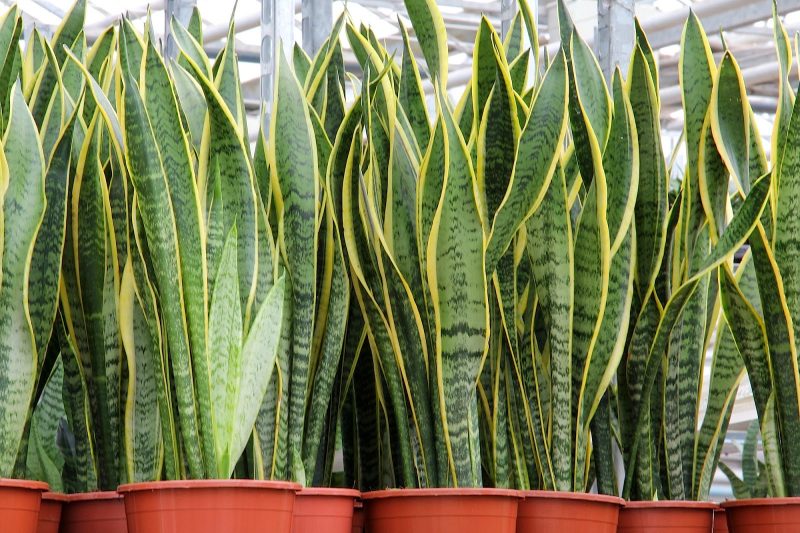
Among the most popular varieties used to decorate a variety of interiors and create floral arrangements, stand out:
- Sansevieria is cylindrical - a species cultivated in room conditions since the XIV century. It differs in dark green leaves twisted into a tube with pronounced grooves. In the natural environment, the variety can reach one and a half meters in height. The color of the leaves, as well as their thickness and height, largely depend on the varieties that breeders are constantly working on. Popular representatives: Mikado, Spike, Spaghetti and Twister.
- Sansevieria Duneri is a succulent species, the rosettes of which consist of 15-20 leaf plates reaching 40 cm in height. The leaves are painted light green with a darker pattern.
- Three-lane sansevieria is a succulent from Africa with vertical foliage of the xiphoid shape, growing up to 1 m in height.Dark green plates have a light border around the edges, which gives the impression of longitudinal stripes. Among the varieties, special attention is given to sansevieria laurenti and a variety derived from it - rosette sansevieria hanni.
- Sansevieria Liberian - a leaf succulent with rosettes formed by six lanceolate green leaves with a colorful pattern in the form of light strokes and a brown border.
Home Care
An exotic representative, being a succulent and tenacious plant, can go without attention for several weeks, while maintaining a natural decorative effect. However, when growing any flower, not excluding sansevieria, it is required to carry out certain agricultural measures, thereby ensuring the beauty and health of the plant for many years.
Lighting and placement
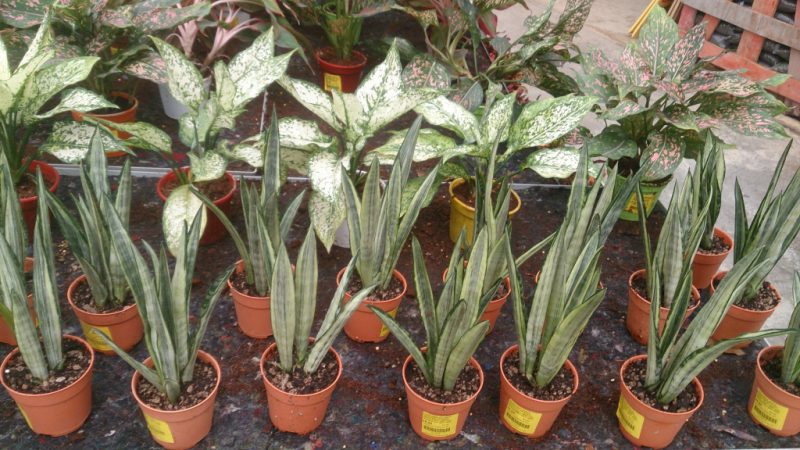
Since the succulent needs natural, soft light, it is better to place sansevieria on the windowsills of the western windows, where the sun is in the afternoon and does not differ in activity. The plant will survive even in the back of the room, however, it may lag behind in development, and the leaves will lose their beautiful color.
Temperature features

The flower is not picky about temperatures. But if the grower wants to provide the plant with comfortable conditions, then you should adhere to the following temperature conditions:
- spring-summer period - 21-28 ° C;
- autumn-winter - 16-20 ° C.
Soil requirements
Soil for an exotic plant requires light, relatively poor with excellent permeability. To fill the pots with sansevieria, a ready-made substrate for succulents and cacti is used, or composed independently of turf and leafy lands, sand in a 2: 1: 1 ratio.

Advice! With self-preparation, the soil mixture should be calcined to destroy pests.
Watering and humidity
Drought-resistant succulent does not need frequent and plentiful watering.
Moistening is carried out only after the earth coma is completely dry.
When placing a flower in the shade or in a room with a low temperature regime, watering is reduced to a minimum, since overflow affects the culture much more destructively than prolonged drought.
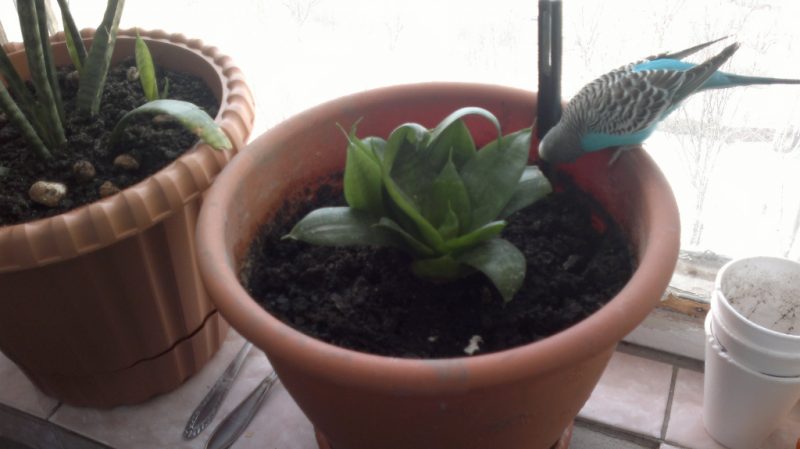
When hydration is carried out, it is necessary to ensure that water does not enter the outlet. Additional spraying to increase the humidity of sansevieria is not required. But it is worth periodically cleaning the sheet plates from dust with a damp sponge.
Top dressing
From the end of spring to the beginning of autumn, double top dressing is carried out for a month. The rest of the time it is enough to feed a succulent plant once a month. To organize additional nutrition, sansevieria uses fertilizers for cacti or succulents.
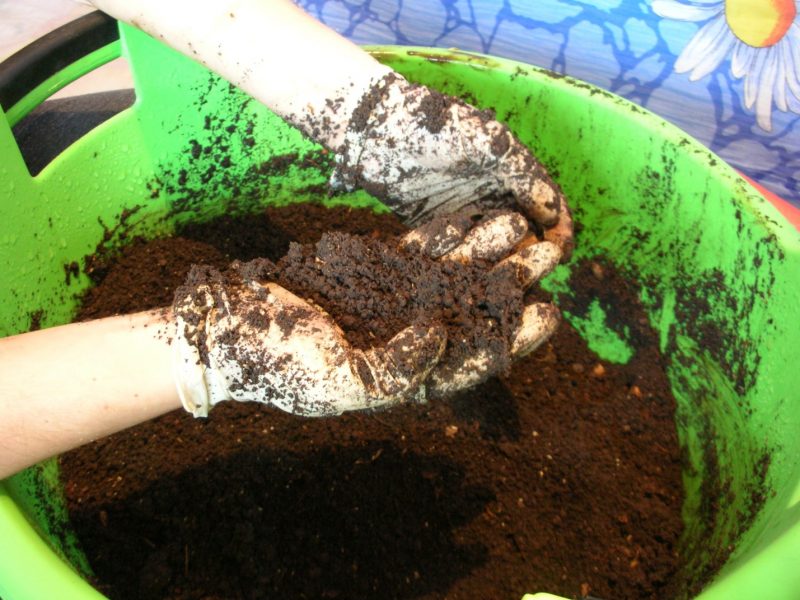
Attention! When growing variegated forms, complexes with a high nitrogen content cannot be used, which leads to the disappearance of the pattern due to the acceleration of the rate of production of chlorophyll.
Plant transplant

The procedure is carried out depending on the age of the plant:
- young specimens - annually;
- adult plants - with an interval of 2-3 years, when the roots appear from the drainage holes.
To correctly transplant a culture, you should adhere to the scheme:
- A durable and shallow pot is selected due to the superficial root system, which is capable of breaking thin plastic. The diameter of the new tank should be 2 cm larger than the previous one.
- A thick drainage layer is placed at the bottom of the tank, providing good water throughput.
- A flower is being poured into the pot.
- The resulting voids are filled with a light substrate that meets the requirements of sansevieria.
Pests and diseases - how to treat?
Among the pests that can annoy the plant, there are spider mites, thrips and mealybugs, which are combated at the early stages of settlement by systematic wiping of leaf plates with a sponge dampened in soapy water. With a strong population of the flower as a protective measure, the affected specimen is treated with an insecticide.

With excessive watering and constant stagnation of moisture, the development of anthracnose (fungal disease) may begin. It is possible to cure the plant only in the early stages, resorting to spraying with fungicide.
Read also:home care for Syngonium
Reproduction of Sansevieria
Propagating the culture at home is recommended by vegetative methods.
Bush division

A procedure suitable for both monophonic and variegated forms is carried out during a spring transplant.
- The bush is removed from the tank.
- Using a sharp, disinfected knife, a process with a growth bud is separated from the mother plant.
- The cut site is sprinkled with an antiseptic in the form of charcoal or activated carbon.
- The shoot is planted in a separate container, which is contained in a lit, warm place.
- A month later, the plant begins active root formation.
Cuttings
The advantage of the method is the ability to get a new instance without extracting the rhizome. However, the reception is not suitable for variegated forms due to the inability to preserve maternal properties.
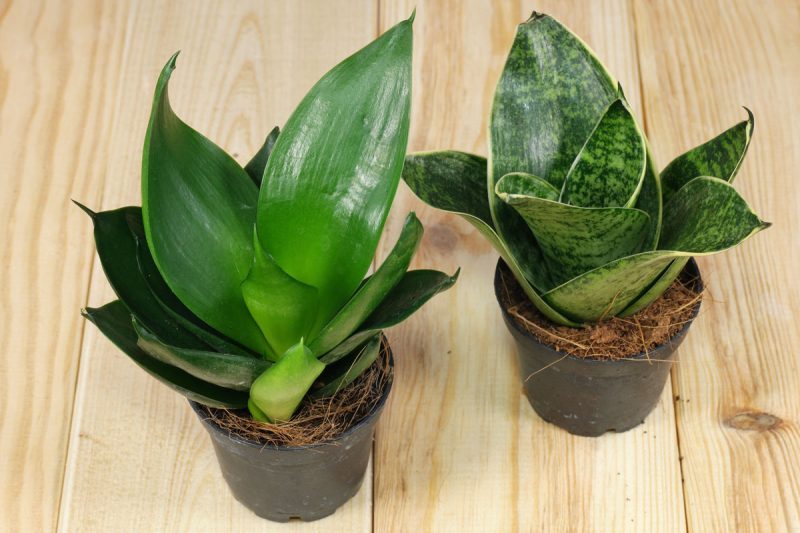
When grafting:
- Adult leaves are separated from 5 to 10 cm long.
- After drying in the fresh air for 2 days, leafy cuttings are placed in moistened sand.
- Landings are covered with a package and transferred to a bright, warm room, where they are systematically ventilated and moistened.
- After 1.5 months, rooting is noted, followed by the formation of children and stem cuttings.
- New plants at the stage of stem cuttings are planted in separate containers.
What problems can a flower grower face?
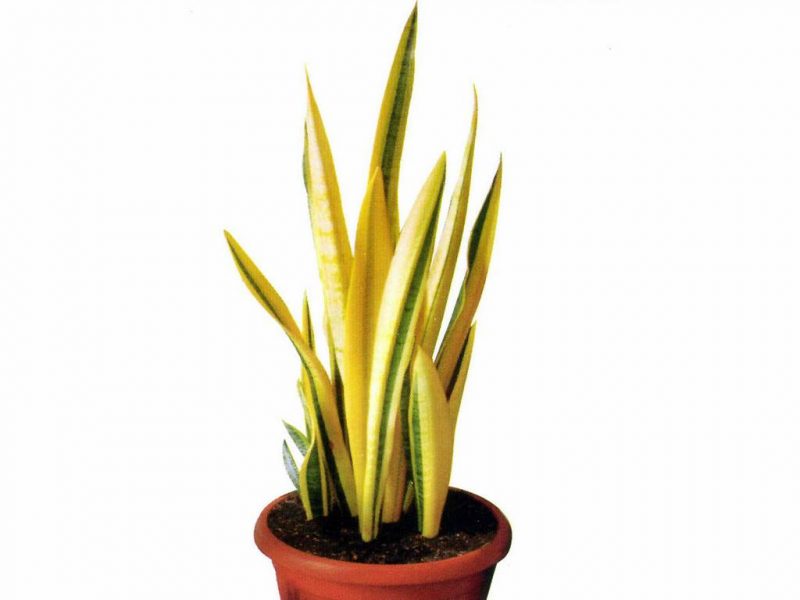
Despite the undemanding culture and excellent endurance, violation of the rules for the care and maintenance of the flower can lead to a number of difficulties:
- Dark spotting on leaf blades - excessive watering when keeping the flower in a room with a low temperature.
- The yellowness of the leaves is a lack of lighting or a too tight capacity.
- Stretching leaves, leading to excesses - a lack of light.
- The softness of the base of the leaves with their further yellowing - getting and stagnation of water in the sockets, which provoked the development of a fungal disease.
- Yellowing and further drying of the ends of leaf blades - lack of natural light, excessive moisture or too low temperatures in the room.
- Leaf lethargy is a long period of drought.
Thus, sansevieria is a beautiful succulent plant, which is quite simple to create comfortable conditions. A great choice, characterized by endurance, for people who like to travel or often go on business trips.












